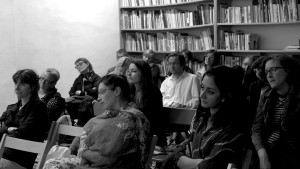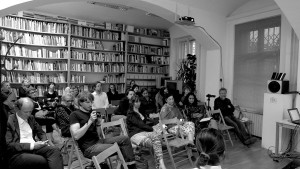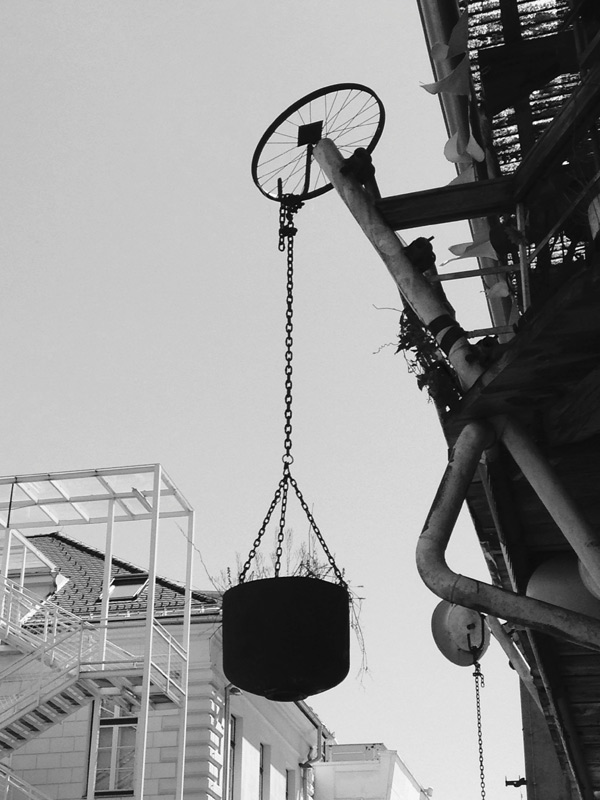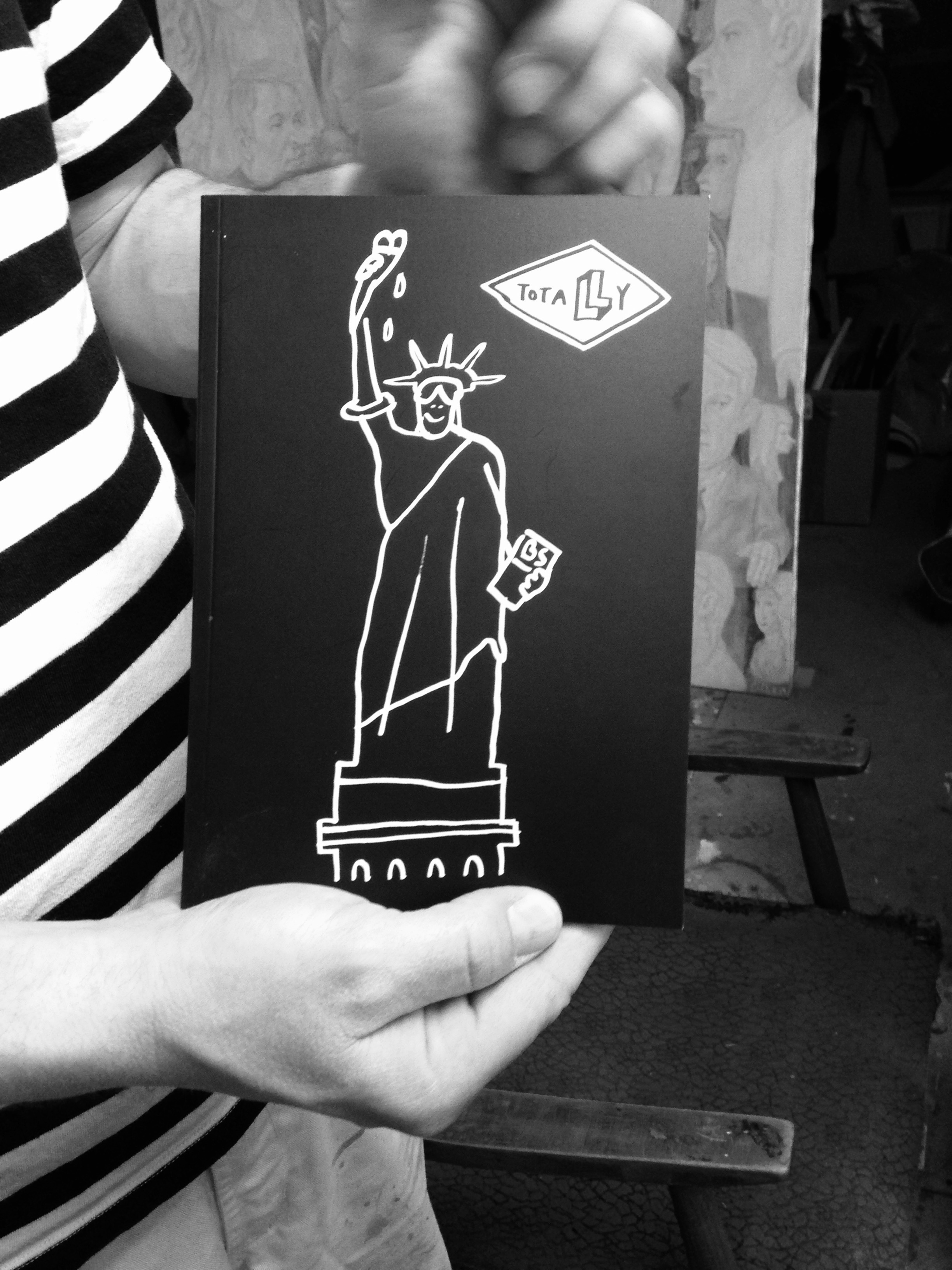The Report on Curating-In-Depth Part 1 by Sidd Perez
This report is an attempt to focus on the discourse of the curatorial as explored in the first phase of the SCCA, Center for Contemporary Arts – Ljubljana and Planting Rice project Curating-In-Depth. My recap of the events that transpired in the first weeks of May 2015 can be found in the ASEF Culture360 feature.
Curating-In-Depth is an incubation project initially brainstormed by SCCA production manager Dušan Dovč and myself out of On The Move’s cultural mobility meeting in Luxembourg on June 2014. In the introduction of our platforms, we were struck with our shared attention towards nurturing curatorial practices alongside agenda of providing alternative knowledge resources. DIVA (Digital Video Archive) is an ongoing material and web archive that researches on, documents and archives local video and media art while Planting Rice slowly recovers texts and documents on art practices in and through the Philippines. Both non-government institutions also focus on developing curatorial discourse and education – SCCA with World of Art and Planting Rice’s offsite workshops and other collaborations.
The project means to address the form of parachuting curating that persists within the cross-pollination and opportunities for cultural exchange in the dominant global system. Whether it is for diplomacy’s sake urged by bigger infrastructures like international surveys or topical alignments that would require a degree of representation of a community, this model has raised criticism in many local communities. Perhaps it is also due to the pragmatic variables that prevent deeper research from the curator’s part. After all, while transnational careers are necessary in current years it has also provided logistic setbacks that restrict an ideal engagement. Curators too have fundamentally fashioned themselves to be self-reliant in their pursuit for research and immersion. Perhaps, their affect as well are not limited to marketable outcomes – hence the lack of opportunities for the kind of residencies that are accessible to artists. The two partners then decided to unpick these conjectures with an exchange and educational program called Curating-In-Depth. In order to realize this, peers of Planting Rice (selected curators with Southeast Asian footing) spent two weeks in Slovenia while the SCCA team, along with the director of Kurziv Croatia are to experience a similar program in Manila.
I would break up the two weeks of curatorial mapping in Slovenia with a day trip to Croatia into collaboration and self-organization. With the professional and efficient management of SCCA, the program was constructed in a seamless itinerary of meeting major activators and movers of Ljubljana, Celje, Maribor and Zagreb. It best represented the breadth of the institution’s network and also depicted the ecosystem of support and relationship they have with one another that has sustained the infrastructure despite the cut on cultural funding in Europe. The itinerary was tailored to allow curators to speak about their institutions or general practice in synergizing to particular visions – individually or in the organizational sense. Historical context – political and cultural – are often gestured at to give sense on how contemporary practices are borne out of adapting to the consequences of social crises. Previous models of self-enclosed guerilla occupancy of spaces made way to modes of working in which a larger community may benefit from. As times changed societies, educational system on cultural making and critique necessarily did not. Hence the building of alternative models of knowledge production outside the academia. While a cartography of collaborations can be traced amongst institution, it could be said that many individuals have carried the torch and pioneered this and it is in their self-organization that institutions build and adapt themselves. Collaboration, then, takes a fluid turn that progress to accommodate more activators in the discourse. In the case of the curatorial mapping in Slovenia the itinerary, while it was efficient, still provided room for impromptu discussions or get-together. SCCA World of Art likewise tied in Borga Kantürk’s residency and eventual exhibition program in Škuc Gallery to the students’ firsthand experience of assisting the curators of the show and also accommodated the visiting curators’ perspective on its process.
Self-organization is seen through the persistence of the stakeholders in maintaining these institutions and perhaps what keeps the wheels of the Slovene art system turning. It could be said that the cultural outcomes from the the division of former Yugoslavia empowered critical thinking through art practices – modes of recall were present in most discussions in the community alongside research on then-marginalized sectors such as the avant-gardist strains through 1920’s (“20th Century. Continuities and Raptures”), OHO group and the seminal Neue Slowenische Kunst exhibition. The history of Metelkova also moved with the current and presently upholds the spirit of invigorating youth and artistic cooperation. In this sense, the art community in Slovenia continues to mold itself with the times and through cross-pollination with other communities accordingly.
It is also of importance to note the opportunity of immersive encounter within the “delegation” from Southeast Asia curators. Six of us from the Philippines, Singapore and Myanmar shared an apartment for two weeks – considered to be uncommon in our transnational condition that usually just affords us an online correspondence. In between the activities assigned by the program, we found it natural to organize ourselves in discussing the state of curating as we cross-reference academic or independent initiatives and cultural variables that condition our practices. Reading lists were shared and texts/links were exchanged in support of one another’s particular interest and research. Likewise, we were able to flesh out degrees of freedom “programmed” by society and how artistic practices in our particular art communities either subvert or subscribe to that. While we got introduced to the Slovene art system, we were also getting to know more about that from the region of Southeast Asia. With gratitude to the coordination and promotion of SCCA, we also managed to articulate these informal but necessary discussions publicly in radio and TV interviews. Consequently that provided a critical cornerstone in forming our individual presentations in two events of the program: the introduction of curatorial and artistic practices and the culminating “From Elsewhere 2”, both held in the SCCA project room.
It is in this first phase that brought us to terms with how we can tailor our engagement with other practitioners and communities that operate outside our own contexts to make it efficient and worthwhile. We identify the similarities that could connect us initially, but it is also in difference that could push us to be reflexive about our practices and eventually establish a broader and critical understanding. While our separate cultures ingrain us with worldviews, the curatorial has moved towards opportunities to change our inherited past and to bridge other modes of understanding that is disparate to ours.
The Report on Curating-In-Depth Part 1 by Shireen Seno
My experience of Curating-In-Depth in Ljubljana was striking on several levels. I was invited by Planting Rice to present a moving image program, 30 years’ experimental film & video from the Philippines, which I co-curated last year and which had been invited to screen in a few places prior to this. But to present this program in Ljubljana was particularly poignant for me. My first encounter with Slovenia was back in Manila in 2007, when I received a copy of the Slovenian film journal Ekran from a young Filipino film critic by the name of Alexis Tioseco. Alexis was a tireless supporter of Philippine cinema, and he met his match in Nika Bohinc, herself a passionate film critic from Slovenia, through their shared love of film. Alexis and Nika were killed abruptly in 2009 in their home in Manila. It was labeled a robbery, but the case is still unsolved.
We screened The Kalampag Tracking Agency at SCCA Ljubljana, in an intimate wooden room full of books on art and film, much like Alexis’ and Nika’s house, and with like-minded people whom they would have loved to converse: the curators and team behind SCCA, a painter, a filmmaker, an artist, arts administrators, an architect now studying curation at SCCA World of Art, my fellow participants from Southeast Asia, among others.
At times, the art scene in Ljubljana reminded me of Manila, with our shared colonial pasts and histories of resistance. The Metelkova compound where SCCA itself is situated was curiously reminiscent of the Philippine jeepney and the continued practice of salvaging existing objects and structures and reclaiming them for new or alternative purposes. It was especially insightful to visit a few of the artist studios in Metelkova and meet painters like Miha Perne whose practice extends into zine-making under the collective White Ice Cream. By night, Metelkova was somewhat similar to Cubao in Manila, as spaces for meeting and drinking, here mostly standing up.
Another highlight of the program was our day trip to Maribor, where we visited the Transnational Guerrilla Art School, run by spirited artist Miha Horvat, housed in a large residence converted into a multi-level space with an impressive share of surprises in every nook and cranny: a mini indoor skate park, a former basement bar/club converted into a rehearsal space for musicians, a well-lit mini museum of cameras and photography, a tiny but dedicated Black Box for film/video screenings, a modern, fully-functioning darkroom, and plenty of tables and sitting spaces for both local youths and other guests to conspire.
What stood out most to me during our curatorial mapping in Slovenia was the apparent omnipresence of government funding in art spaces as well as the energy and attention directed towards the discourse, documentation, and archiving of art as much as art practice itself. In the field of the moving image in particular, the DIVA Digital Video Archive, documenting video and new media practice in Slovenia from the 1970s onwards, is an incredibly important SCCA initiative made accessible through an extensive, bilingual online website.
The Report on Curating-In-Depth Part 1 by John Kenneth Paranada
My experience in Slovenia served as a Mobius strip – continues and one sided, all ends joined feverishly commenting on the notion of human experiences and curating boiling down to all questions of how. How do we curate? How do we teach it? How do we learn it? And how instead of surrendering to institutions, our idea of making amends and progress is breaking out of it. Accessing the artistic intelligence in the region was quite refreshing – it feeds a certain fantasy that alterity is actually a value like a warm, airy, clever and unpretentious pop record on a twitchy summer night.
Harald Szeemann once said, ‘works, concepts, processes, situations, information (we consciously avoided the expressions “object” and “experiment”) are the “forms” through which these artistic expressions are expressed’. True enough, we may be trapped in the worst of times to be a curator after all – a world where exhibition making has become the art form in itself and where attitudes doesn’t really become forms anymore but instead it becomes a network of collaborations and communities of senses.



